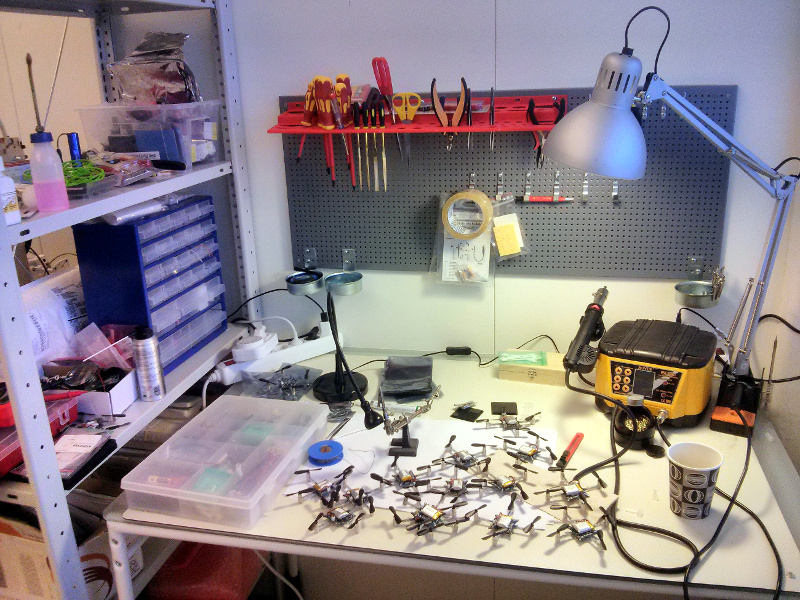It’s been a while since we summed up things happening in the community so here’s some of the things that are happening. There’s lots of more things, so if you think we are missing something, then post it in the comments below.
Ralph has been doing some work on an semi-automatic flip feature in the client. There’s more info on the forum and video below.
Last week we tested some modifications made by otto for a headfree mode (i.e yaw only rotates the platform, not the referance direction). It’s a really nice feeling just rotating without taking care of the direction you are going in :-) There’s more information and links to code on the forum.
The SHERPA project have been working on swarm algorithms using a vision system and the Crazyflie.
Geof from Centeye have been working on optical flow stabilization using the Crazyflie. He has a prototype board working and there’s lots of information in the forum about this build. To see the results have a look at the video below.
Thanks to Victor the Deviation firmware for Devo-7e (custom firmware for Devo RC-controllers) now has support for the Crazyflie (needs hardware hack). If you would like to give it a try have a look at the code or grab one of the nightlies.
Researchers at the University of Tokyo have been testing a new concept for a HoverBall using the Crazyflie. Imagine throwing a ball into the air that doesn’t come down (well not right away at least..). Here’s some more info and a picture.
We have also seen some nice stand alone controllers for the Crazyflie, one by MidLifeCrisis (more info here) and one by ivandevel (video below) . There’s also more info in the forum.
There also some updates on the work done by Oliver on the Kinect tracking of the Crazyflie. A demo video is shown below (it looks great!) and there’s more information on the forum.
And finally here’s a nice video we found on Youtube showing position control of the Crazyflie using a VICON system.


